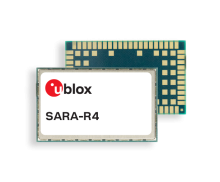
Case studies
物联网在农业的应用:u-blox 蜂窝通信硬件和通信解决方案助力高效农业生产
尽管在物联网席卷各个领域之前,我们从未想过科技会助力农业的发展,但科技的确正在为农业创造效率。本案例研究将概述一项农业物联网应用,揭示水资源(我们最珍贵的资产)保护的更多可能性。
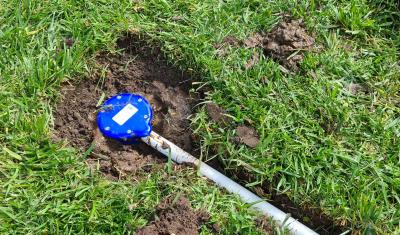
The ability to remotely collect the moisture, temperature, and fertilizer composition of soil in near real-time is giving the agriculture sector an opportunity to achieve never-before-seen efficiencies. New multi-level in-situ soil sensors provide insights that help farmers better understand how their crops are growing based on the dynamics measured in the soil. These insights are particularly valuable for water-scarce regions, considering that an estimated four in five of the world’s irrigation farmers over-water their fields by 10 to 25 per cent.
Lattech Systems, an IoT telemetry company, has developed a telemetry and data transfer solution that is both reliable in remote farming locations and predictable from a cost-of-data perspective to connect remote sensors to the cloud. Their solution uses a soil moisture and fertilizer activity tracking probe developed by Tribus. This IoT in agriculture case study demonstrates how Lattech Systems partnered with u-blox to bring its customers cost-effective, reliable, and low-power wireless connectivity and data management.
Our experts are here to answer your questions about this case study.
Contact us and we'll be in touch as soon as possible:
Challenge #1: optimizing irrigation to increase produce yield
The agriculture sector faces numerous challenges, not least the management of one of the world’s most precious resources: water. Understanding when, when not, and how much to irrigate crops is critical to optimizing yield, quality and cost. Guessing or trying to predict weather effects is not sustainable. Instead, farmers need a reliable data-driven solution that negates the need for manual intervention in often remote and inaccessible terrain to bring about significant gains in overall productivity. Not only does the right amount of water delivered at the right time impact how effectively plants respond to environmental changes, but it also impacts their ability to translocate nutrients from the soil to their leaves – essentially their biological power plants. An optimized water supply, therefore, optimizes nutrient translocation, which, ultimately, optimizes the quantity and quality of produce.
Challenge #2: addressing environmental challenges associated with over-watering with cost-effective, reliable, and low-power sub-surface soil probes
Soil probes have been used on farms for many years to monitor soil moisture levels, helping farmers to make better-informed decisions about irrigation. However, significant challenges related to cost, reliability, wireless connectivity coverage in remote areas, battery life, and timely data delivery have, in some cases, prevented soil probes from delivering their full potential. Moreover, on irrigated row crops, soil probes need to be removed and reinstalled every year due to planting and harvesting - a time-consuming and expensive exercise.
Finding a solution that offers more or less permanent sub-surface installation, would not only reduce the overhead costs associated with installing and removing soil probes, but it would also eliminate these time-consuming tasks from the already very tight time window during which planting and harvesting need to take place.
Eliminating the need to install and remove soil probes by using permanent probes buried underground would encourage their use at a higher density across fields, increasing the value of the data they generate. With a network of sub-surface connected probes tracking soil moisture and fertilizer activity in near real-time, farmers would be able to tackle environmental problems associated with fertilizer and nutrient leaching caused by overwatering, addressing one of agriculture's biggest environmental headaches.
The solution: creating a sub-surface soil probe capable of transmitting data hourly with unlimited power autonomy
Having analyzed all the available solutions, Lattech Systems identified costs associated with connectivity, network coverage, and battery life of their sensors’ communications unit as the three most important limiting factors hindering the development of a viable solution.
Lattech Systems, designed a low-power telemetry device powered using energy harvested from a small integrated solar panel. The solution generates sufficient electricity to power both the telemetry and the connected sensors, enabling hourly data transmission, 365 days a year.
Using their solution, farmers can accurately assess the moisture, temperature, and fertilizer activity levels across their farm and manage irrigation proactively instead of simply guessing or playing catch up. What’s more, the solution works globally.
To enable reliable and cost-effective sensor data collection and communication, Lattech Systems partnered with u-blox.
Solution architecture*
- Thingstream data transfer via an MQTT Broker
- The u-blox SARA-R422 LTE-M, NB-IoT (Narrowband Internet of Things) and EGPRS module for multiregional use
- The EVA-8M global navigation satellite system (GNSS) receiver
|
“In u-blox, we have the ideal partner, both for reliable modules and predictable costing, for global data collection and cloud-based data management. For the agriculture industry this is a game-changing offering, giving the best solution for predictive water maintenance and all the benefits this brings.” - Truhann van der Poel, founder of Lattech Systems |
Solution benefits
Primary benefits to the end-user:
- Near-real-time soil moisture and temperature data to farmers directly to their desktop
- No external power is required. Both sensor and telemetry are powered via solar energy
- Efficient use of water decreases energy and water usage
- Irrigating at the right time optimizes harvest yield
- Reliable hardware, engineered to meet the most demanding of conditions
- Global IoT communication coverage that works anywhere
Further benefits:
- One partner, delivering industry-leading data insight for effective agricultural outcomes
- Highly efficient, low-power cellular communication solutions
- Regular data transfers into the cloud for analysis (down to every 15 minutes)
- Global coverage
- Predictable pricing (no bill shock!)
Outcomes
Significant reduction in fertilizer leaching. By monitoring and understanding how plants interact with nutrients in near real-time in the rootzone and t determining when nutrient leaching occurs, farmers can reduce over-watering as well as the amount of fertilizer that is leached into the wider ecosystem. Reduction in fertilizer costs are one of the most compelling reasons to monitor fertilizer activity
Significant increase in nutrient usage efficiencies: In the same way that the controlled application of fertilizers makes for efficiencies, data-driven irrigation ensures that nutrients stay within the rootzone and are not washed away contaminating the wider water system with nitrates. Moreover, farmers can achieve considerable savings made in water and pumping costs.
Reduced application of nitrate: Irrigation farmers can save 15% in nitrate applications alone using Lattech System’s telemetry with soil probes, amounting to billions of dollars saved globally.
|
“Lattech’s solution using u-blox’s cellular module combined with Thingstream’s communication service ensures farmers have two-way data connectivity to each soil probe, globally and at a very affordable and predictable cost.“ - Emile Jordaan, principle founder, Tribus. |
*These may all be present or in various combinations depending on the specific soil probe
Featured products

<p>LTE-M / NB-IoT / EGPRS 通信模块</p>
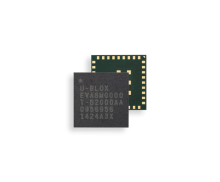
EVA-8M SiP
具有成本效益的 u-blox 8 GPS SiP
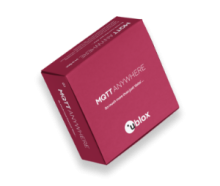
MQTT Anywhere
<p>物联网通信即服务 SIM 基准站 LPWA</p>
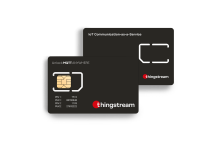
物联网 SIM 卡
让您的设备几乎可以在世界任何地方进行连接